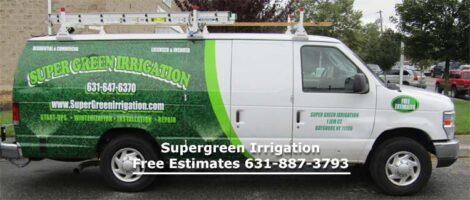Posted On:
Category:
Tips for Maintaining Your Automatic Irrigation System
Tips for Maintaining Your Automatic Irrigation System

Automatic irrigation systems are an invaluable tool for any home with a garden or lawn. They can provide your landscape with the precise amount of water it needs to remain healthy and beautiful, with little effort on your part. Of course, for your irrigation system to give dependable performance and consistent results you need to provide it with some key maintenance. Here are 6 essential tips for maintaining your automatic irrigation system.
Establish a Regular Maintenance Schedule
Having a regular maintenance schedule for your automatic irrigation system is the best way to maximize its functioning and lifespan. Inspect and change any worn parts regularly, especially those used in outdoor gardens which are exposed to the elements. Make sure to get inside the system, for example, by inspecting for any leaks or broken pipes, replacing any worn or broken parts, and ensuring that all the parts fit correctly and securely.
In addition, for optimum performance, check for any clogging or debris build-up after each season and replace the filter as needed. Lastly, don’t forget to clean the outdoor irrigation system and check for any damages due to weather, vehicles, or animals. Implementing this routine maintenance plan and attending to small maintenance issues in a timely manner can help to extend the life of your automatic irrigation system and save you time and money in the long run.
Inspect and Adjust Your Sprinklers
Your sprinkler heads are the most crucial parts of your irrigation system, as they distribute the water to your lawn. Make sure to check their positioning often and ensure no water is being blocked or wasted. You should also check that they are distributing the right amount of water to cover large and small areas. Change any parts that have become weak or worn and adjust the sweep angle of your sprinklers, if needed.
Clear Out Any Debris
Automatic irrigation systems can become clogged when debris from nearby trees or plants accumulates in the pipes or on sprinkler heads. To clear this out, use a hose to send a powerful stream of water through the pipes and remove any leaf buildup or clogs. Keep an eye out for any other debris like wires, stones, sticks, or discs, and remove them immediately.
Test the Water Pressure
In order for your automatic irrigation system to operate correctly, it needs the right water pressure to ensure effective and efficient sprinkler operation. To measure your water pressure, you need a pressure gauge that can be easily attached and read. Once the gauge is in place, check the readings frequently. If the water pressure is too low, you can increase the pressure by installing a booster pump or replacing the existing one. The correct pressure should be sufficient enough to cover the entire area that you would like to irrigate, but not too high, as this can result in an excessive amount of water being distributed, creating areas that are overly wet, or leaving behind patches of land that are much drier. Testing the water pressure regularly will ensure that you always have the correct pressure so that your sprinklers can work optimally.
Check the Timers
In order for your automatic irrigation system to operate correctly, it needs the right water pressure to ensure effective and efficient sprinkler operation. To measure your water pressure, you need a pressure gauge that can be easily attached and read. Once the gauge is in place, check the readings frequently. If the water pressure is too low, you can increase the pressure by installing a booster pump or replacing the existing one. The correct pressure should be sufficient enough to cover the entire area that you would like to irrigate, but not too high, as this can result in an excessive amount of water being distributed, creating areas that are overly wet, or leaving behind patches of land that are much drier. Testing the water pressure regularly will ensure that you always have the correct pressure so that your sprinklers can work optimally.
Check the Watering Zone Map
The last step in maintaining your automatic irrigation system is to review the watering zone map. Take the time to look at what parts of your lawn and garden are being watered, and adjust the map if necessary. Pay extra attention to shady sections of your garden that may be requiring more watering, and double-check to make sure every corner of your landscape is receiving an adequate amount of water. Redistributing the water in the correct way will help to ensure an even amount of coverage across all features of the garden. Make sure your irrigation system is adjusted accordingly and kept up to date for optimal performance.
Proper maintenance is key to keeping your automatic irrigation system healthy and efficient. Follow the 6 essential tips outlined above and your lawn will remain lush and vibrant for years to come!








